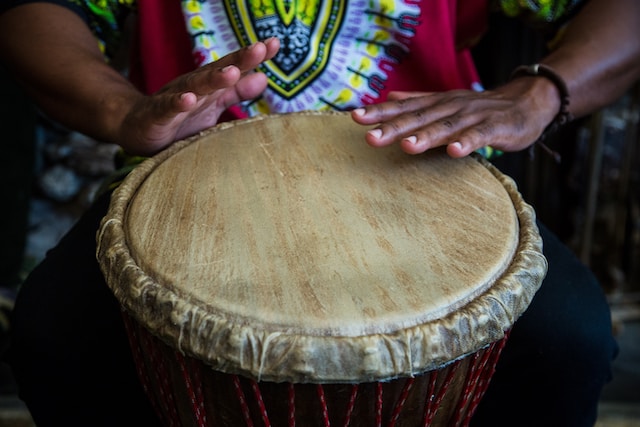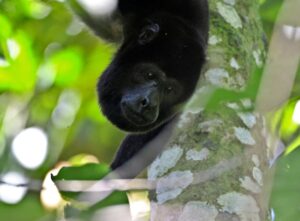Hopkins Village in Belize is known as “the Friendliest Village in Belize”, providing experiences to celebrate Garifuna culture. It dates back to the 19th century when Black Caribs fleeing persecution in Honduras settled here, leading them to call this the Friendliest Village in Belize.
Sirrian and her daughters arrived with the rest of the Garifuna people, who combined their language with that of Arawaks and Carib traditions. UNESCO recognized their music, dance, and spirituality as masterpieces of humanity.
Historical Significance
Hopkins is an idyllic beachfront village in southern Belize that’s best known for its Garifuna population, comprising around one thousand residents who dedicate much of their time and effort to fishing. Surrounded by five miles of white sand beaches and boasts a vibrant culture that’s still very present here.
Hopkins first flourished and attracted tourists during the 20th century due to its breathtaking natural beauty and rich cultural history, captivating travelers. Several hotels and resorts opened to accommodate this increasing tourist influx; today however, Hopkins remains an idyllic fishing and farming village while offering high-end restaurants, beach bars, and gift shops, as well as its trademark relaxed yet friendly charm – earning it the title “friendliest village in Belize“.
Hopkins residents are descendants of Afro-Caribbeans who arrived in Belize via shipwreck off St Vincent in 1635. After being warmly received and intermarrying with local islanders, these refugees created the Garifuna society and language which still thrives today. These refugees also brought with them unique musical and culinary traditions which have become an integral part of Belizean culture; Hopkins is considered its center and offers visitors the chance to experience these musical and culinary traditions while learning more about this fascinating history.
Hopkins remains an authentic cultural village, unlike many of the coastal villages like Ambergris Caye, Placencia, and Caye Caulker that have been discovered by mass tourism. If you want to experience authentic Belizean culture rather than generic tourist spots that have popped up elsewhere in Belize this is an incredible destination.
One of the best times to visit Hopkins is during its dry season from January to March, which offers sunny days, clear blue skies, calm sea waters, and affordable prices. Garifuna Settlement Day on November 19th also draws many tourists, offering live music performances, drumming competitions, and food for sale alongside recreating an original landing ceremony from before.
Garifuna Origins
Hopkins dates back to the late 18th century when an Afro-Caribbean people known as the Garifuna settled along Belize’s coastal region. Descended from both African slaves and indigenous Caribbean inhabitants, these African descendants brought with them their unique culture; comprising languages, music, dance and culinary traditions that continue today.
Hopkins proudly commemorates this rich cultural heritage through food and dance, serving traditional Garifuna dishes such as Hudut – made with grated bananas or plantains mixed with fish, fresh coconut milk, and signature Garifuna spices – as well as Bundiga (grabbed and cooked plantains or bananas topped with grilled snapper).
Garifuna cuisine draws influence from both African and Caribbean ingredients, which makes its culinary scene such a treat for visitors. You can experience this delightful mix of flavors by dining at restaurants like Lazy Lizard – named by Travel and Leisure as one of the top spots in Belize for dinner – where it may even coincide with drumbeats or even dance performances by Garifuna musicians! While enjoying your meal there may even be drumbeats playing simultaneously – don’t be surprised if one surprises you while dining there!
Hopkins is recognized as an epicenter of Garifuna culture in Stann Creek District. Despite the increase in resorts and hotels in its vicinity, this community has maintained its charming beach charm while offering guests an immersive cultural experience.
As it’s believed that Yugadan was first established by Black Caribs seeking refuge from persecution in neighboring Honduras, many believe a woman named Sirrian and her daughters were among those to arrive first at Hopkins and thus lead to its naming as Yugadan by her many residents.
Hopkins Village, situated in the Stann Creek District, is a sought-after vacation spot. Famous for its warm hospitality and charming natural setting, laidback vibes, and authentic Garifuna culture – Hopkins has quickly become a top travel destination.
Colonial Influence
Hopkins is a small town located within the Stann Creek District that’s known for being home to Garifuna culture, offering visitors a variety of activities and cultural experiences. Visiting this village should be top of your itinerary when exploring Belizean culture!
Hopkins Village of Belize is widely recognized as “The Friendliest Village,” providing visitors with an authentic Belizean experience away from more touristy locales such as Ambergris Caye and Placencia. Hopkins makes a perfect destination for visitors seeking relaxation in a peaceful atmosphere with stunning beaches, lush jungles, and amazing natural surroundings.
Hopkins residents are warm, welcoming individuals who take great pride in the history and heritage of their ancestral lands. In particular, they honor their Garifuna heritage by upholding traditions, music, and dance associated with this region. Many events throughout the year celebrate Garifuna communities including Mango Fest in June and Garifuna Day Settlement celebration on November 19. On these two significant dates, Hopkins’ normally quiet village comes alive with drumming, food and festivities that showcase this region’s vibrant cultural past.
Hopkins was affected by various social changes during its colonial era, beginning with the arrival of European settlers who eventually established a basic democratic system which was formalised at a Public Meeting held on 20 September 1765 and continued in this form until 1871 when British Honduras was established as a British Colony.
The arrival of the settlers also marked the introduction of cocoa, sugarcane, and cotton into Hopkins’ local economy, opening up new food sources while increasing farmers’ incomes. While colonialism had many positive outcomes for Hopkins residents, it also presented unique challenges.
One of the major obstacles was presented by Ore, who severely mistreated his people and forced them to pay him 25 dollars a month if they wanted to remain in their village. Furthermore, he dictated rules regarding farming permanent crops.
Today
Hopkins is an attractive and vibrant community with an interesting culture. Home to most of Belize’s Garifuna people, Hopkins is known for its friendly, genuine hospitality and welcoming spirit. Residents here make their living from farming and fishing while others have found work in Belize’s growing tourism sector.
Locals take immense pride in sharing their heritage with visitors. They will gladly show you around their village’s music, dance and food traditions while discussing its history. Additionally, the region is famous for its wetlands which attract an abundance of bird life as well as native wildlife species.
Hopkins was, like other southern Belize communities, subject to colonialism during its formative years, but not as severely as other areas due to a lower foreign settler presence in its vicinity.
However, it did experience many of the typical issues faced by colonies at that time, including an abusive landowner and no government support for the settlement of its area.
Hopkins Village is home to approximately 1,000 inhabitants who make a living from farming, fishing, and tourism-related work – an industry which they also embrace with open arms! Hopkins’ people have become known for their warmth and genuine hospitality – thus earning it recognition by Belize First Magazine as “The Friendliest Village in Belize”.
Hopkins is also a popular destination for tourists looking for an authentic Caribbean experience and looking to experience local life firsthand. Several luxury resorts and smaller, more intimate hotels near Hopkins provide opportunities for visitors seeking more peaceful vacation experiences.
Hopkins remains home to most of the Garifuna population despite colonial impacts and is one of the country’s most culturally significant locations. Renowned for its drumming traditions and hosting numerous festivals commemorating their culture, Hopkins is still an iconic village known for being culturally significant.




